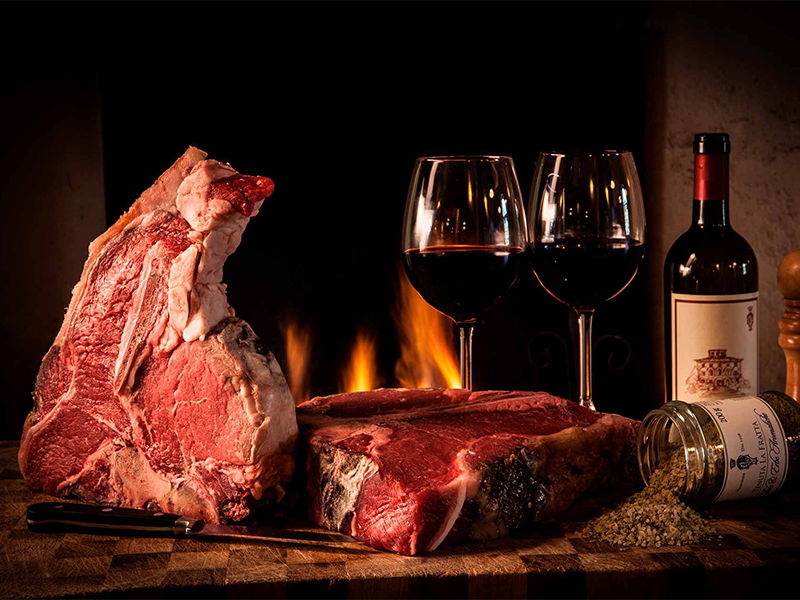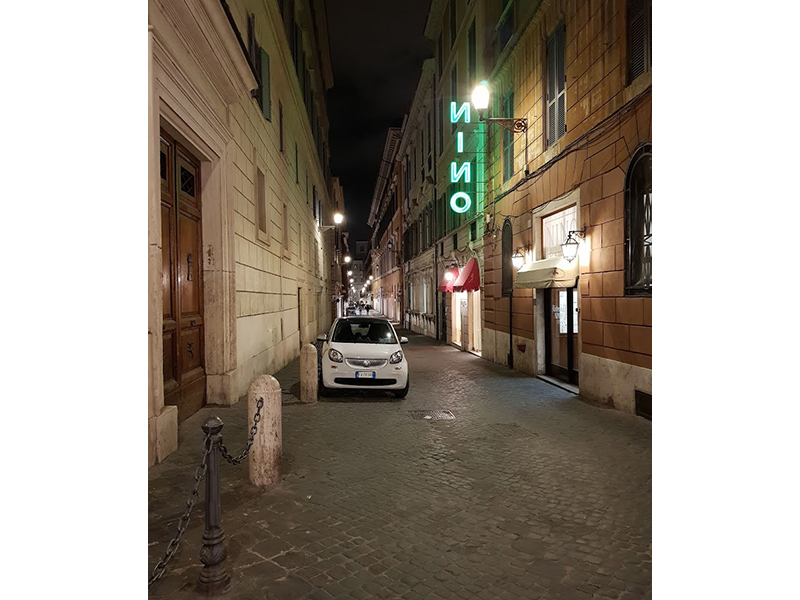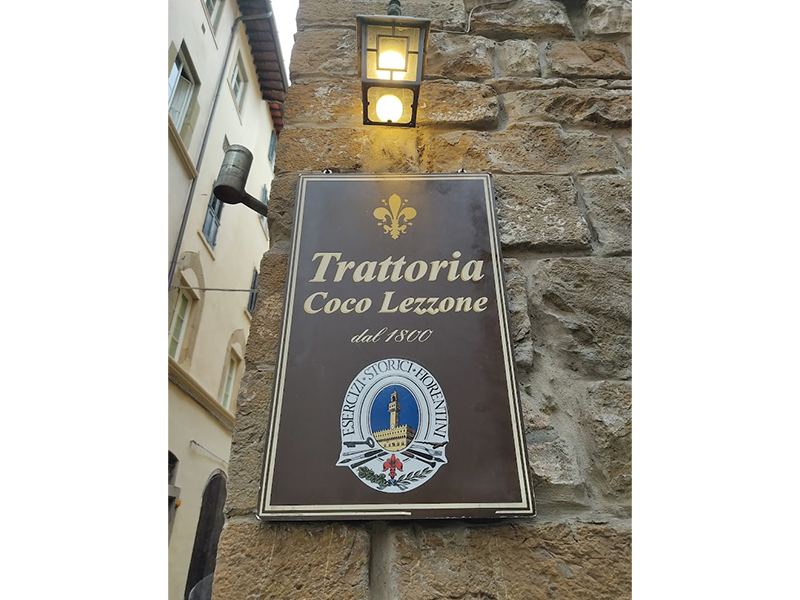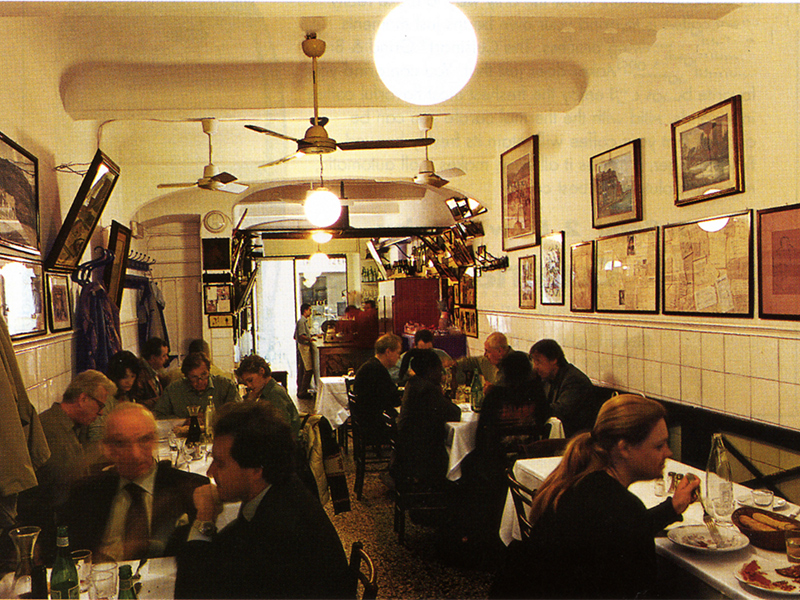Let’s hope that COVID is finally in the rear-view mirror….and that after being cooped up for a few years, we can travel again – travel with a VENGEANCE!
As is often the case, my mind wanders toward Europe and the many pleasures of Tuscany.
After numerous euphoric dining trips up and down the Boot, one dish in particular stands out: BISTECCA FIORENTINA, the uniquely gargantuan slap of porterhouse steak for which Tuscany is famous.
Honestly, if Italy’s on your mind, you NEED to get some Bistecca Fiorentina in your mouth.
Here’s why…starting with THE MEAT.
In northern Italy’s Val di Chiana, an area that touches Tuscany, Umbria and Lazio, they raise the tallest, heaviest and largest breed of cow in the world. It’s called the CHIANINA.
These ancient white giants were bred to pull carts and plow fields for centuries, and they tip the scales anywhere between 1800 lbs. for cows and 3000 lbs. for bulls. That compares with American beef cattle that go to market weighing about 800 pounds less. With the advent of modern farm machinery, the Chianina are now raised exclusively for their beef,
The Italians have long been suspected of fraudulently trading on their reputation for producing the world’s best olive oil. Many producers actually import olives from Spain, Morocco and Greece. At facilities in Italy they process those olives into oil, then ship the premium-priced product around the world in fancy bottles bearing a “Made in Italy” label.
I can’t help but be reminded of Claude Rains as the French police prefect in the classic film, CASABLANCA, who declares to Humphrey Bogart, “I’m shocked, SHOCKED, to find gambling going on here!”
As opposed to “Italian olive oil” the Chianina porterhouse steaks are practically impossible to counterfeit, imitate or substitute. Beyond the fact that production is tightly regulated to ensure PURE BREEDING, no other animal can produce a steak on that scale.
A bit about the Chianina.
The cattle are grass-fed and extremely lean…about 2% fat…the leanest type of beef. Because they are so huge, they take longer to mature before they go to market. Thus, they are very expensive to raise.
The BISTECCA is a porterhouse and that means that there are two types of steak on either side of the center bone. On one side is a FILET that melts like butter in your mouth. On the other side is a STRIP SIRLOIN, boasting a richer flavor and a chewy pleasure.
For a classic Bistecca Fiorentina, the steaks must be thick – 3-4 fingers, or about 3-inches, thick. Thirty days of dry aging is also mandatory. They’re cooked VERY RARE over white-hot oak or olive wood coals for about 4 minutes per side. Next, the steak is cooked upright standing on the back of the bone for maybe another four minutes, then drizzled with extra-virgin olive oil and finally socked with Maldon Salt. Rosemary is often used to season Bistecca Fiorentina, but isn’t essential to the preparation.
If you don’t like a RARE STEAK, Bistecca Fiorentina might not be the dish for you, but it’s certainly been embraced by steak connoisseurs. Lots and lots of ristorantes, trattorias and osterias in this part of Italy offer Bistecca Fiorentina, and from what I have experienced, most of them do a pretty good rendition of the dish. (I’ve never found Bistecca Fiorentina in southern Italy. The climate is too hot to raise cattle. Thus, water buffalo were imported years ago from India…and voila: BUFFALO MOZZARELLA.)
Here are a few of my favorites……I’ve been to all of them. None will disappoint.
Let’s start in ROME……decades ago.
On our first trip to Italy, Joanne and I stayed at a hotel on the Via Veneto. The concierge recommended a restaurant just around the corner on the Via Campagnia called GIRARROSTO TOSCANO. I dropped a jaw when the Bistecca Fiorentina arrived. I had, never in my life, seen a steak of that scale. And during the past 30 years, I can truthfully say that each and every time we have visited the Eternal City, we have dined at Girarrosto and ordered its Bistecca Fiorentina. Perhaps with a bottle (or two) of Chianti Classico Riserva.
Bonus: Giararrosto Toscano’s PARADE of ANTIPASTI. Waiters swarm your table, one after the other…each bearing a different treat, including bocconcini, platters of prosciutto, melon from Emiglia-Romagna, salamis of all stripes, cippolini onions, baby meat balls, and on and on ‘til you tell ‘em to stop.
Not far away, near the base of the Spanish Steps, you’ll find NINO, a fixture on Via Borgognona since 1934. It’s easy to spot the place, as their large, imposing neon sign reads backwards, depending on which way you approach. Your bistecca is sliced tableside. These waiters are veteran servers and know their stuff.
Off to FLORENCE……
…and BUCA LAPI, a charming and cozy downstairs oasis on the Palazzo Antinori in the vibrant heart of the city. On a recent tour of their kitchen, we saw the grilling of our 3-inch-thick specimen resting upright on the bone just before it was served to our table….along with a bottle of Brunello.
Next is COCO LEZZONE, on Via del Parioncini in the middle of Florence. The crowd includes lots of locals as well as a few tourists. Some complain about the price of the Bistecca, but it’s worth remembering that GOOD STEAK ISN’T CHEAP. AND CHEAP STEAK ISN’T GOOD.
BONUS: If you visit during the winter months, the restaurant also offers a bonus of two Tuscan bread soups…no kidding. The first is RIBOLITA, which is leftover Minnestrone thickened with day-old bread. Sounds bad, tastes good. The other offering is PAPPA DI POMODORO – rustic San Marzano tomato soup, loaded up with garlic and basil, and topped with a healthy slug of extra virgin olive oil.
And then there’s SOSTANZA, hidden on a lonely Florentine backstreet on the city’s east side, near the Santa Maria Novella Railway Station. You’ll know you’ve found the restaurant when you see the crowd gathered in front of a grungy eatery displaying faded health certificates and restaurant reviews in the window. It’s tiny and at one time must have been a working man’s bar. Today it is one of the toughest reservations in Florence.
Sostanza is decidedly old-school, with family-style seating and crowded, narrowly spaced tables. Dominating the phone-booth size kitchen is a scorching, blazing, fiery wood kindled grill for – guess what? – Bistecca Fiorentina. At Sostanza, it’s pure porterhouse joy.
But, that’s not all folks……there’s a bonus here, too: BUTTER CHICKEN, featuring skin-on chicken breasts which the chef continuously douses with boiling butter to caramelize and crisp up the skin. The dish is brought to the table by the chef who will ask you if you want a plate. You will say “No.” He will then set the banged-up, sizzling cooking pan, brimming in molten butter, right down in front of you and proceed to squeeze a couple lemons over the chicken. The butter will belch, boil, foam and spit. You know it’s WAY TOO HOT TO EAT. But – like the honey badger – you just don’t give a shit and you dig right in.
Do not wear a tie to Sostanza.
Now we’re off to MILAN
It’s a little too far north to find many places that serve Bistecca Fiorentina. But one night, while not particularly searching for the iconic porterhouse, we discovered it on the menu of one of our favorite restaurants: SOLFERINO.
Opened in 1909, Solferino is a charming place – unpretentious and utterly delicious. It was truffle season and I guess they just couldn’t help themselves. Our bistecca was SMOTHERED with black truffles. How did I feel about that? Well, the truffles certainly are good, but I’m not certain that they added much to the classic dish, except maybe dollars.
Okay, so now you are asking, “Which is best? A Bistecca Fiorentina in Italy or a 3 lb. dry-aged double porterhouse at MANNY’S (or, for that matter, at PETER LUGER, in NYC.)?
Well, both are PRIMITIVE PLEASURES, but the steaks themselves are very different. Unlike the grass-fed Chianinas, both Manny’s and Peter Luger feature grain-fed beef (mostly corn), which results in a highly marbled (FAT) and deeply flavored steak. And as we all know…FAT IS FLAVOR.
Corn is not native to Italy. They only produce 6.4 million tons per year, compared to 354 million tons in the United States. The corn that is produced in Italy is mainly for polenta and the rest fattens the pigs that produce Parma’s glorious prosciutto.
Being grass-fed, the Chianina have very little fat. But nevertheless, they’re good as well…just different.
So I got to thinking about the entirety of a meal – the whole dining experience.
At Manny’s the blinds are closed. You are in Manny’s world. You’re an observer of the buzzy dining room with celebrities popping in from time to time. The 3 lb. double porterhouse that you are sharing at your table is heaven. Your second bottle of Cabernet is smooth as silk and goes down easy – sometimes too easily. You’re cozied up in a booth and it’s cold outside. YOU FEEL LIKE NOTHING BAD COULD EVER HAPPEN HERE.
Now, the Bistecca. You’re in Italy, maybe Florence, the land of La Dolce Vita. Italian culture revolves around love, passion, beauty, food and sensual pleasures. Dining is long and leisurely, drawn out with family, friends and romantic partners. Italians equate food with love, specifically designed with seduction in mind.
So I ask you, “Would sharing a meal on a balmy summer evening at sunset in a restaurant along the banks of the Arno River in Florence have something to do with loving Bistecca Fiorentina?
I was just wondering….
WTF
PHIL
























Awesome WTF Blog!!1
Love the memories of Giarrosto Toscano! Shelly and I will be in Tuscany in a few weeks to see Vieri and enjoy some awesome food. Then heading to Venice – got any recommendations?